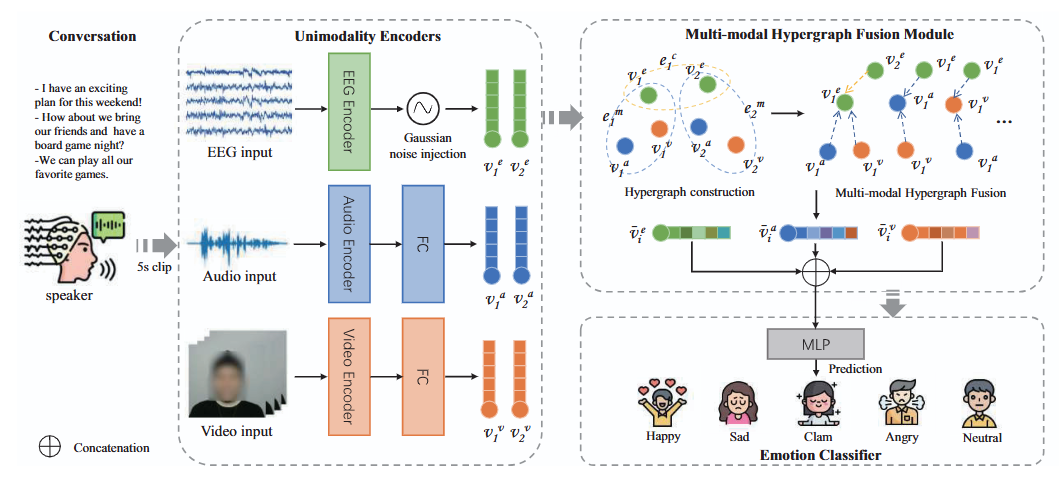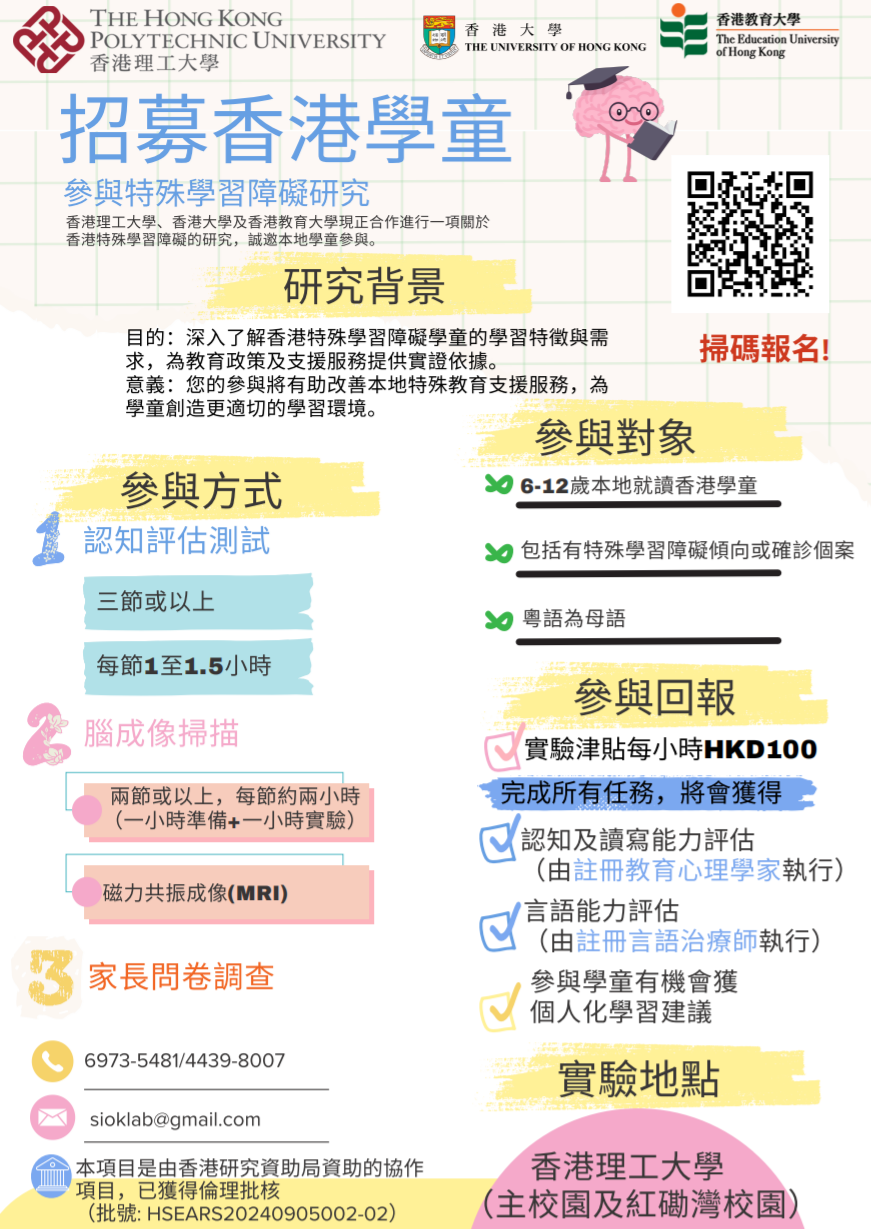
整合機器學習,行為分析及多模態神經影像技術研究香港特殊學習障礙的共存性
Integrating Machine Learning, Behavioral Analysis and Multimodal Neuroimaging Techniques to Investigate the Comorbidity of Specific Learning Disabilities in Hong Kong
This research project is awarded the collaborative research fund in the year 2025, supported by the University Grants Committee. The project is led by The Hong Kong Polytechnic University, in collaboration with The University of Hong Kong, and The Education University of Hong Kong.One of the main goals of this project is to examine the comorbidity of specific learning disabilities in Hong Kong children. The findings will help us understand the underlying causes of specific learning disabilities, including developmental language disorders, dyslexia, dysgraphia, and dyscalculia. This information, in turn, may assist in the early identification of children with learning disorders. The research is supervised by Prof. Siok at The Hong Kong Polytechnic University and has been approved by the university’s Research Ethics Committee (Approval Number: HSEARS20240905002-03).
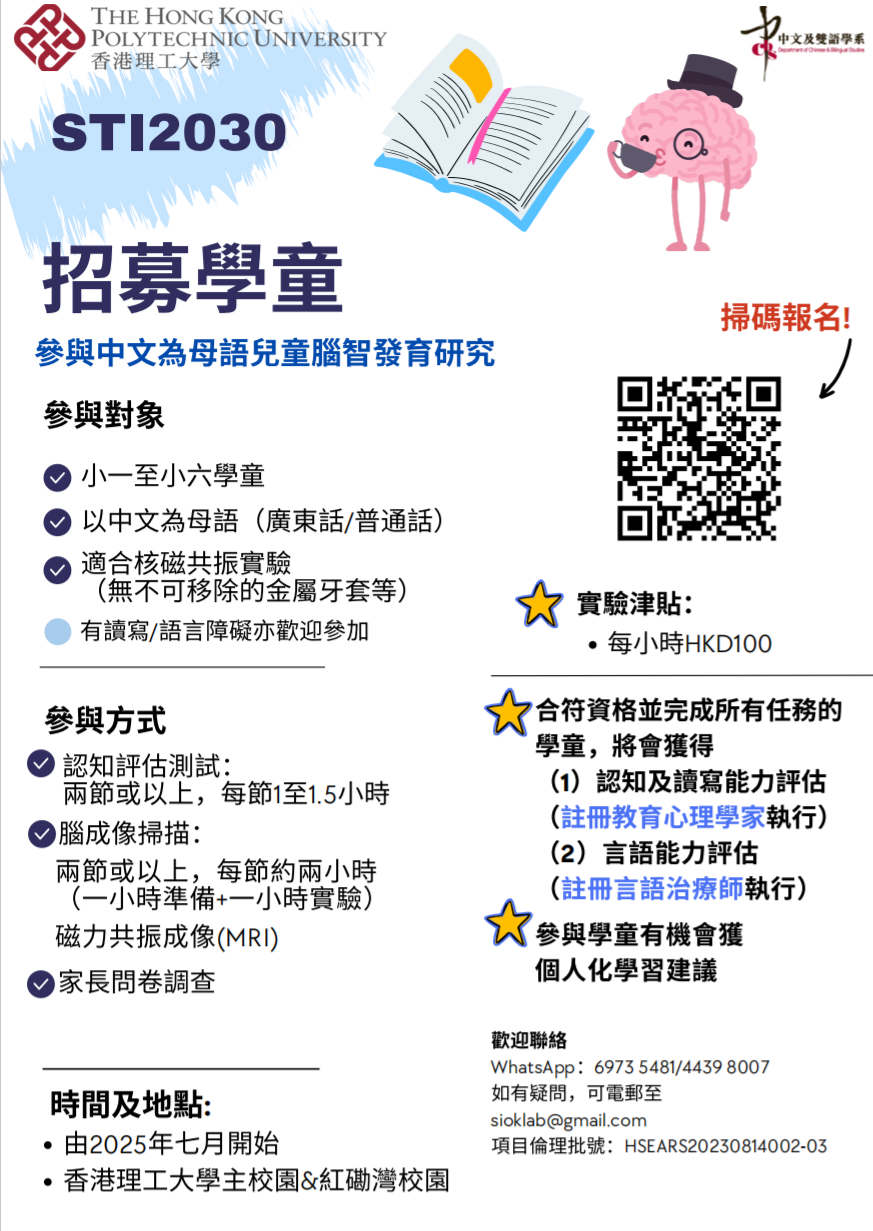
中文為母語兒童腦智發育研究:語言和閲讀發展困難的特殊樣本隊列研究
The Brain Development of Chinese School-age Children: A longitudinal study on Chinese children with language and reading disorders
The research project is a subproject of Science & Technology Innovation 2030, funded by the Ministry of Science and Technology of China. The project covers multiple cities, with Hong Kong being one of the participating cities. This study aims to explore the cognitive and neurobiological mechanisms of language and reading development. The research findings will help understand the underlying causes of language and reading disorders, providing important insights for the early identification and treatment of these disorders. The research is supervised by Prof. Siok at The Hong Kong Polytechnic University and has been approved by the university’s Research Ethics Committee (Approval Number: HSEARS20230814002).
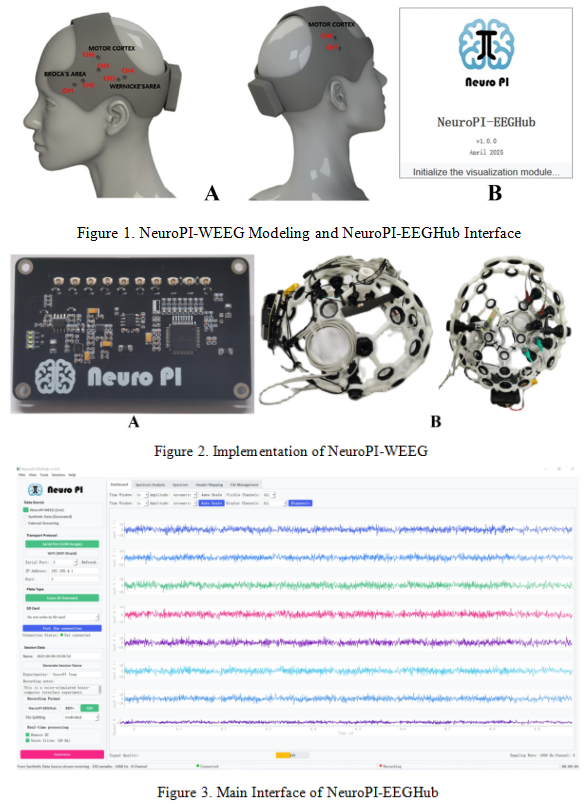
NeuroPI-NeuroVoice: A Data Acquisition, Analysis and Presentation Platform for Verbal Brain-Computer Interface
The NeuroPI-NeuroVoice platform with four key objectives:
1. optimizing electrode placement.
2. refining EEG chip design.
3.enhancing signal analysis for precise cortical processing tracking and verbal information processing.
4.by producing high-quality electrophysiological data, the platform aims at advancing neurolinguistic investigations and accelerates assistive neurotechnology development for speech and language disorders.
NeuroPI-WEEG :A lightweight, wearable EEG system designed for verbal task research. Dry electrode, non-invasive, specific area, independently wearable wireless transmission, seeking a balance between wearability and signal quality
NeuroPI-EEGHub:A modular EEG analysis platform that streamlines brain activity data processing. EEG data acquisition, preprocessing, processing, visualization, verbal data analysis; psychological experiment design.
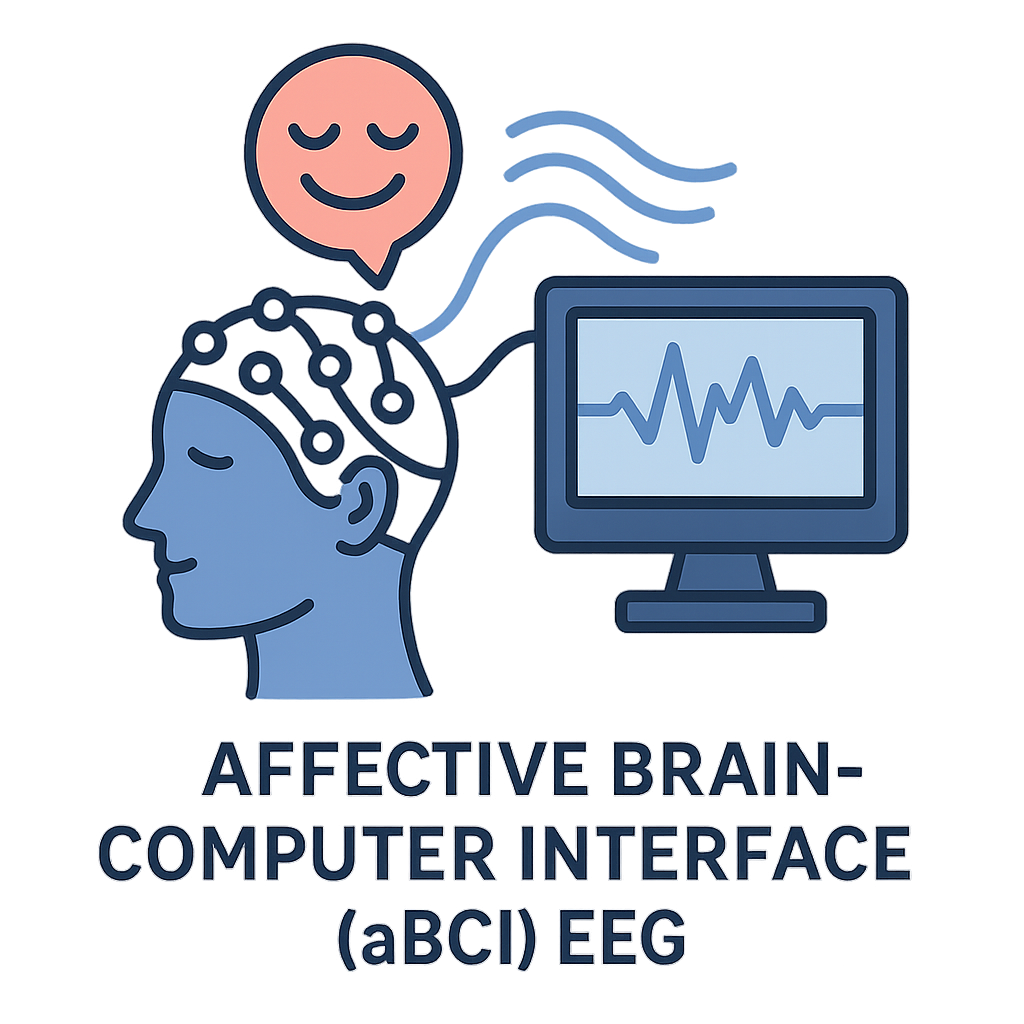
Affective Brain-Computer Interface (aBCI)
An affective brain-computer interface (aBCI) is a novel interface technology for decoding human emotional states, and it represents a major breakthrough from traditional motor BCI to the next generation of cognitive BCI.
Representative works:
1. Hongyu Chen, Weiming Zeng, Chengcheng Chen, Luhui Cai, Fei Wang, Yuhu Shi, Lei Wang, Wei Zhang, Yueyang Li, Hongjie Yan, Wai Ting Siok, Nizhuan Wang. EEG emotion copilot: Optimizing lightweight LLMs for emotional EEG interpretation with assisted medical record generation. Neural Networks (2025): 107848.
2. Yueyang Li, Shengyu Gong, Weiming Zeng, Nizhuan Wang, Wai Ting Siok. FreqDGT: Frequency-Adaptive Dynamic Graph Networks with Transformer for Cross-subject EEG Emotion Recognition. The 2025 International Conference on Machine Intelligence and Nature-InspireD Computing (MIND).
3. Zijian Kang, Yueyang Li, Shengyu Gong, Weiming Zeng, Hongjie Yan, Lingbin Bian, Wai Ting Siok, Nizhuan Wang, Hypergraph multi-modal learning for eeg-based emotion recognition in conversation, arXiv preprint arXiv:2502.21154.
4. Shengyu Gong, Yueyang Li, Zijian Kang, Weiming Zeng, Hongjie Yan, Wai Ting Siok, Nizhuan Wang, LEL: A Novel Lipschitz Continuity-constrained Ensemble Learning Model for EEG-based Emotion Recognition arXiv preprint arXiv:2504.09156.
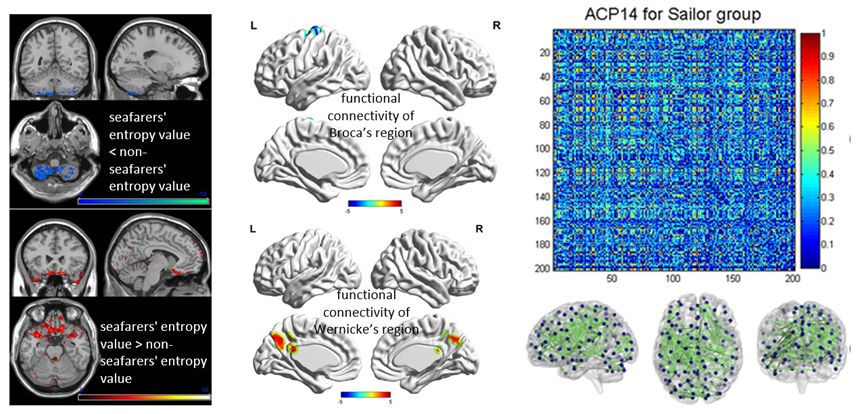
Occupational Neuroplasticity
Our group pioneering the concept of Occupational Neuroplasticity—a term we first proposed to describe the neural adaptations driven by long-term professional training and career engagement. This foundational work has significantly contributed to the fields of Occupational Neuroscience and Occupational Psychology. Key findings include:
• Our meta-analysis of functional neuroimaging studies revealed enhanced activation in experts compared to novices, particularly in the left precentral gyrus (BA6), left middle frontal gyrus (BA6), and right inferior frontal gyrus (BA9). Structural meta-analyses further demonstrated greater gray matter volume in experts within the bilateral superior temporal gyrus (BA22) and right putamen;
• Using professional seafarers as a case study, we found that long-term occupational training induced significant changes in regional brain activity entropy, functional connectivity, and lateralization within the language network, while also shaping an atomic connectome pattern specific to seafaring expertise.

The left middle frontal gyrus: How is it related to Chinese reading?
This project aims to elucidate 1) the neural networks for the orthographic, phonological and semantic constituents of Chinese and English reading, 2) how language learning experience shapes the brain structure and functions, and 3) the cognitive functions subserved by the left middle frontal region (LMFG) that are pertinent to reading. Our previous studies published in Nature, PNAS and Current Biology revealed significant variation between the neural substrates of impaired reading in Chinese and English. A central finding was that Chinese dyslexics had reduced activation relative to controls in the left middle frontal gyrus (LMFG) during reading processing but the two groups did not differ in the left temporoparietal region, which has been found deficient in alphabetic dyslexics and is believed to be responsible for rule-based phonological processing. We speculate that the LMFG may be responsible for the mapping of orthography-to-phonology and orthography-to-semantics and the coordination and integration of visuospatial information with linguistic (phonology and meaning) information.
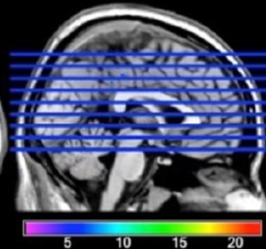
Cortical language function protection of aphasic patients
This project aims to analyze lesion-behavior mapping in Chinese aphasic patients using anatomical, diffusion and resting-state functional magnetic resonance imaging. Chinese neurosurgeons used to follow the Western practice of protecting Broca’s and Wernicke’s areas during brain surgery based on the assumption that the language network is universal across cultures. Since the publication of our work in 2004, some neurosurgeons have become aware of the unique role of the LMFG in Chinese reading processing and argued that language-specific brain maps should be adopted for better brain surgery planning (e.g., Feng et al., 2006; Shang et al., 2013; Zhang et al., 2008). For example, a group of neurosurgeons at Shanghai’s Huashan Hospital performed awake surgery and intraoperative language mapping on patients with glioma to map their language regions. The neurosurgeons reported that an additional brain area, the LMFG, was unique in Chinese production and that the language maps for Chinese and English are different. Importantly, with the use of this Chinese-specific language map, the incidence of postoperative language disorders had significantly reduced to 4.5% (in their study based on 66 patients) (Wu et al., 2015, HBM). The findings of this project will serve important theoretical and clinical purposes: 1) inform whether the nature and types of aphasia vary across languages, 2) reveal which brain-behavior metrics better correlate with language deficits, and 3) find out the best assessment protocol that can quickly unveil their stroke-induced language deficits.
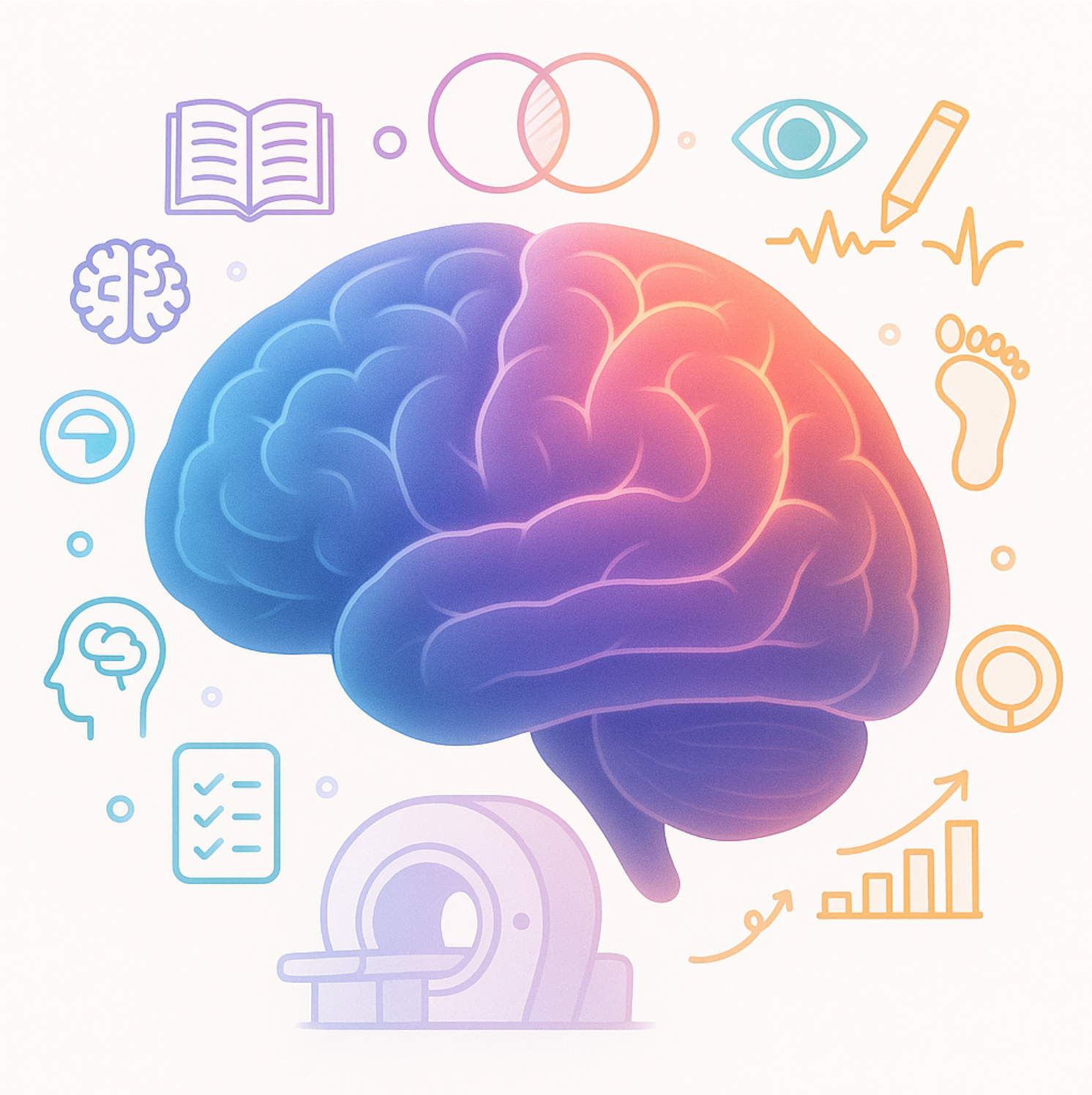
Cognitive and brain mechanisms underlying typical and atypical language and reading processing
This project aims to 1) examine the cognitive and brain mechanisms underlying normal and atypical language and reading development, 2) study the comorbidity rate of the two types of disorders, and 3) compare the effectiveness of various reading remediation approaches including phonological training approach and other approaches that emphasize on visual, orthographic, working memory or motor skills. We will use a comprehensive battery of tasks including language and reading ability tests, phonological processing, visuo-orthographic skills, working memory functions (visuospatial working memory, phonological working memory, and executive control functions such as selection and switching) and motor skills will be used to measure children’s general language and reading functions. Their brain scans during language and reading processing will be acquired using MRI and fMRI.
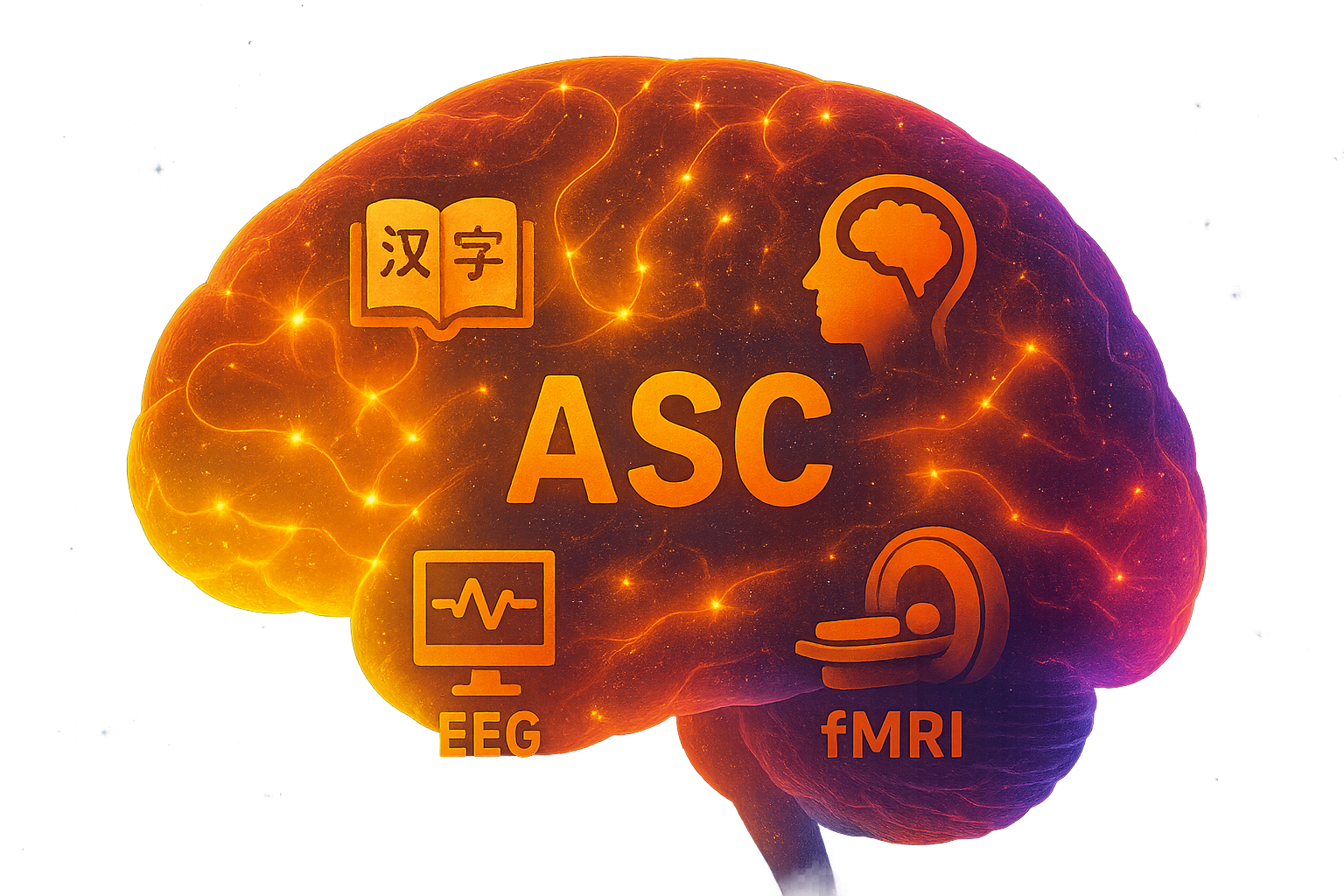
Language development in children with autism spectrum condition (ASC)
The project aims to: (1) illustrate how Chinese autistic individuals differ from neurotypicals in terms of literacy development; (2) investigate what factors contribute to Chinese literacy development in autism; (3) understand why autistic individuals perform distinctly in reading words and reading meanings from the perspective of the brain; (4) seek possible neuro-markers in autism’ language and cognitive system. The project will help contribute to the understanding of the autistic population in Hong Kong in terms of their language and brain development. It uses multimodal neuroscience techniques including Electroencephalography (EEG), functional Magnetic Resonance Imaging (fMRI), and an integrated EEG and eye-tracking approach to probe into the brain function of Chinese ASC. Using multimodal neuroscience techniques helps obtain both high temporal (EEG) and spatial resolution (fMRI).
Recently Preprint Papers
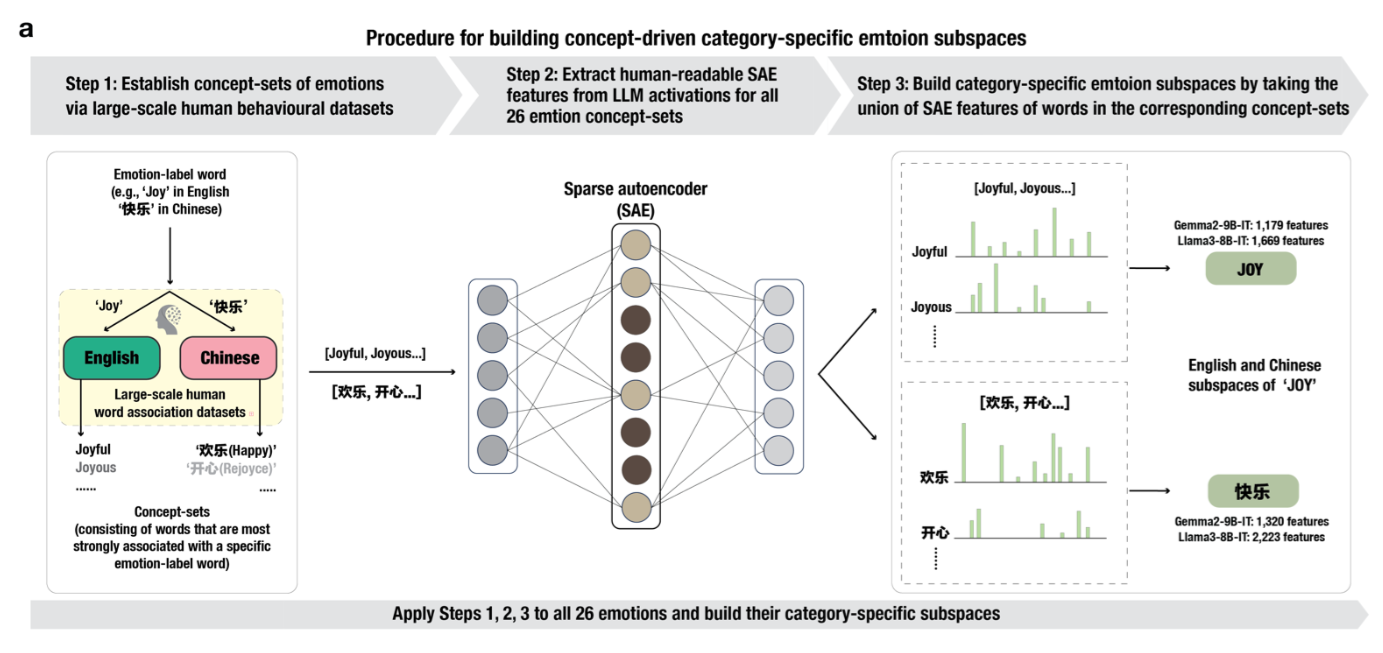
Xiuwen Wu, Hao Wang, Zhiang Yan, Xiaohan Tang, Pengfei Xu, Wai-Ting Siok, Ping Li, Jia-Hong Gao, Bingjiang Lyu, Lang Qin, AI shares emotion with humans across languages and cultures, arXiv preprint arXiv:2506.13978.
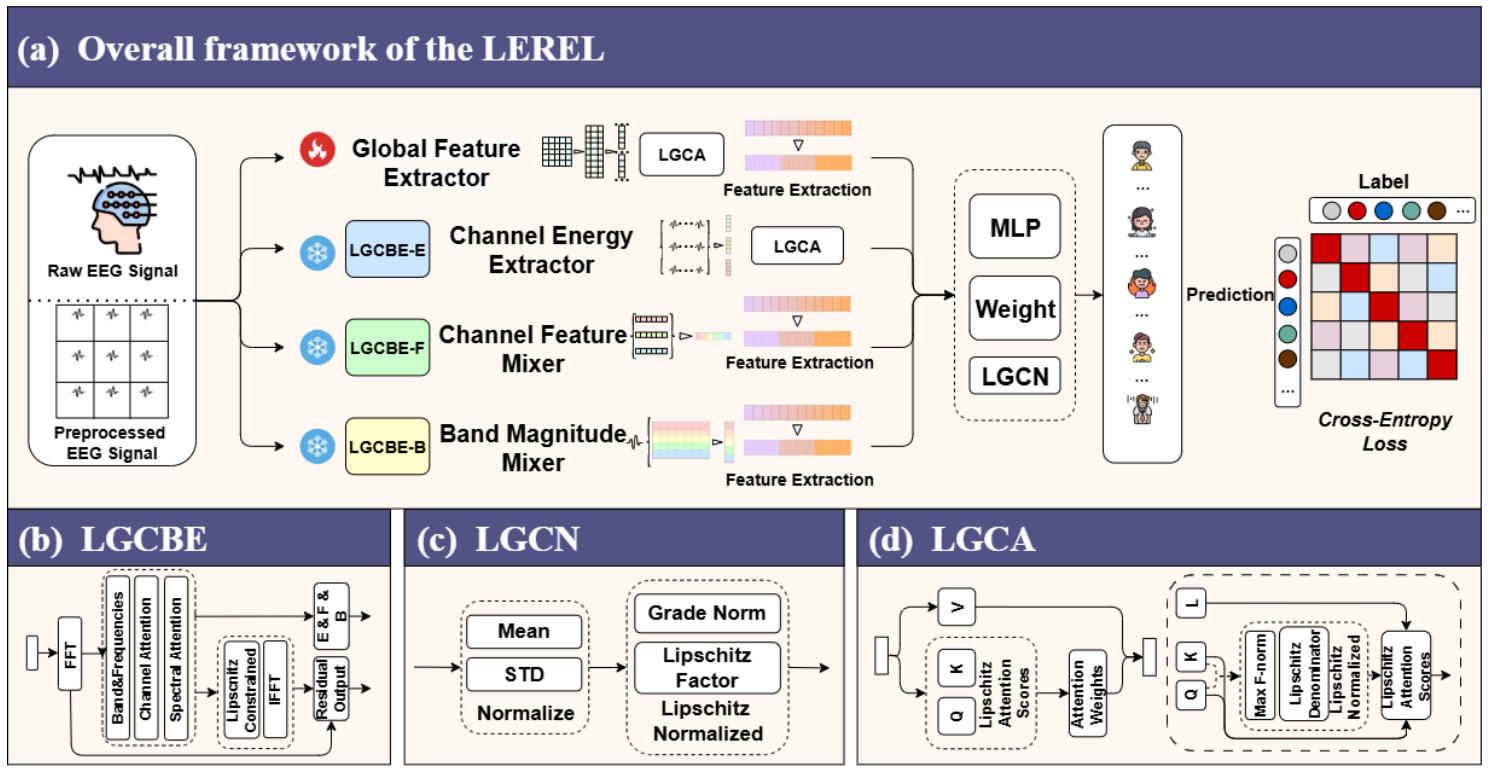
Shengyu Gong, Yueyang Li, Zijian Kang, Weiming Zeng, Hongjie Yan, Wai Ting Siok, Nizhuan Wang, LEL: Lipschitz Continuity-Constrained Emotion Recognition Ensemble Learning For Electroencephalography arXiv preprint arXiv:2504.09156.
